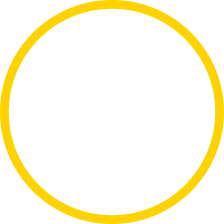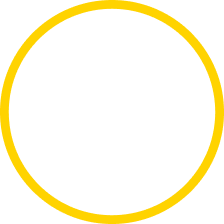

How to recognise head lice and nits
If a note came home from your child’s school warning of a head lice infestation, or your child started complaining of an itchy head or scalp, would you be confident in your ability to identify head lice and nits?
Head lice infestations are particularly common amongst school aged children, which is why it’s important for parents and caregivers to be able to recognise and identify adult head lice and their eggs.
Being able to quickly and accurately identify head lice and their eggs will help you be able to make an informed choice about treatment and may allow you to get the infestation under control before it spreads to other members of the family or household.


What do nits look like?
In addition to knowing what head lice look like, it’s a good idea to learn how to identify their eggs when you see them.
Head lice eggs, known as nits, are often the only or most visible indication of a past or present head lice infestation.
Nits are very small, usually about the size of a pinhead. They’re normally white to yellow in colour and are attached to individual hair shafts, quite close to the scalp, with a glue-like substance secreted by the female lice.
Nits are usually easier to spot when they’re close to the base of the hair nearest the scalp. They may appear as tiny white teardrop shaped specks and can be attached further up hair shafts if they were attached some time ago and the hair has begun to grow out.
Once the nits hatch, the empty eggs can often remain attached to hair shafts, but at this stage they can more easily be removed from hair using a fine-toothed nit removal comb.
Lice Eggs vs.
Dandruff
To the untrained eye it can be easy to mistake nits for dandruff and vice versa, as both can appear as small, white flakes or specks on the scalp.
There are a few key differences that make is easier to differentiate between nits and dandruff:
Nits & Lice
Dandruff
Location
Nits are usually found close to the scalp, whereas dandruff is a common skin condition that causes scalp skin to flake and can be found throughout the hair.
Adhesion
Nits are attached firmly to hair shafts with a glue-like substance that the female lice secrete when laying their eggs. Nits are difficult to remove, whereas dandruff can easily be shaken free or brushed off.
Appearance
Nits are oval shaped, white to yellow in colour and have a somewhat shiny or translucent appearance. Dandruff flakes are irregularly shaped and are often larger than nits.
Itching
Itching, especially on the back of your head and neck (caused by an allergic reaction to the head lice bites), will often be the first indication of a head lice infestation, whereas dandruff may cause itching wherever there is flaking scalp skin
Lice Eggs vs.
Dandruff
To the untrained eye it can be easy to mistake nits for dandruff and vice versa, as both can appear as small, white flakes or specks on the scalp.
There are a few key differences that make is easier to differentiate between nits and dandruff:
Nits & Lice
Dandruff
The Head Lice Life Cycle
The entire head lice life cycle takes around 30-35 days, depending on environmental conditions including temperature and humidity. There are three stages to the head lice life cycle:


Nits (Eggs) Stage
A female louse can lay up to around up to eight eggs per day for their lifespan of around 30 days. It takes around eight or nine days for the egg to hatch into a nymph.


Nymph Stage
Freshly hatched lice are known as nymphs, which will each moult several times over the next 10 to 15 days before maturing into adult head lice. Nymphs appear similar to adult lice but are smaller.


Adult Louse Stage
After nymphs moult for the third time, they become a mature adult head louse. Adult head lice can live for up to 30 days on a person’s scalp and feed on blood multiple times per day.
Empty nits/hatched eggshells can remain glued to hairs for several weeks but are not a source of continual infestation.
Preventing Head Lice
It’s important to choose an effective treatment option such as the fast and effective KP24 Rapid range when treating a head lice infestation.
After using a lice treatment product as directed, it’s a good idea to comb through wet hair thoroughly with a fine metal tooth comb in order to remove dead lice, eggs, and hatched egg shells (also called casings).
If required, re-apply the treatment after 7-10 days, or as directed on the product packaging.
Continue to check or comb through wet hair daily for at least 2-3 weeks after the initial treatment to be sure all dead lice and eggs are gone and to prevent reinfestation.
Treatment Options
If you’re trying to wipe out an infestation, know that you’re certainly not alone.
While dealing with head lice and nits can be unpleasant, there are effective products available on market, such as KP24’s range of head lice treatment, prevention and defence products, to help you get the job done. KP24’s Rapid Kit can treat, remove and prevent all in one pack.
Remember to always read the label and follow the directions for use.
Preventing
Head Lice
It’s important to choose an effective treatment option such as the fast and effective KP24 Rapid range when treating a head lice infestation.
After using a lice treatment product as directed, it’s a good idea to comb through wet hair thoroughly with a fine metal tooth comb in order to remove dead lice, eggs, and hatched egg shells (also called casings).
If required, re-apply the treatment after 7-10 days, or as directed on the product packaging.
Continue to check or comb through wet hair daily for at least 2-3 weeks after the initial treatment to be sure all dead lice and eggs are gone and to prevent reinfestation.
Treatment
Options
If you’re trying to wipe out an infestation, know that you’re certainly not alone. While dealing with head lice and nits can be unpleasant, there are effective products available on market, such as KP24’s range of head lice treatment, prevention and defence products, to help you get the job done. KP24’s Rapid Kit can treat, remove and prevent all in one pack.
Remember to always read the label and follow the directions for use.
